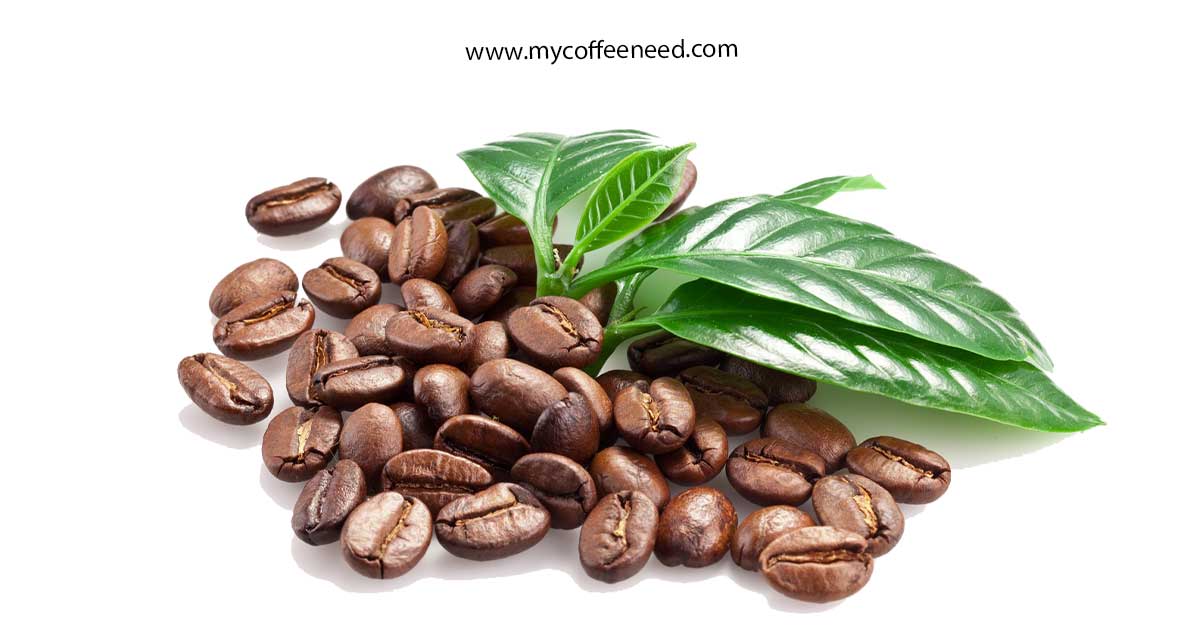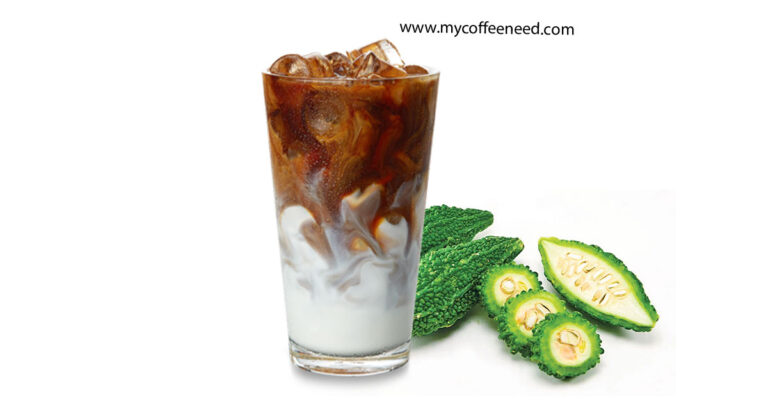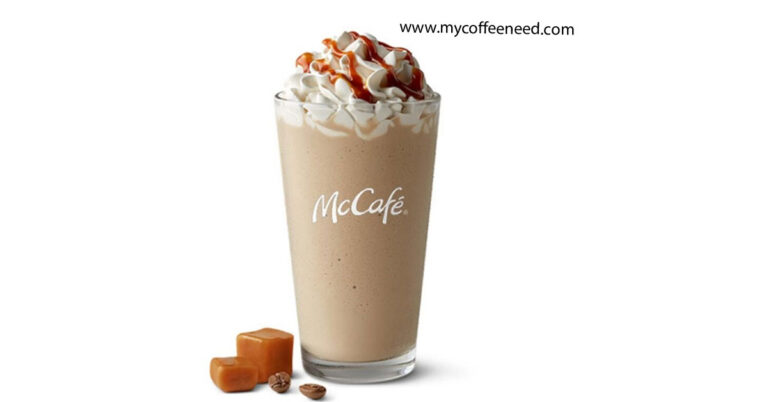Best Roast for Iced Coffee
Have you ever wondered what’s the secret to creating the perfect iced coffee? The secret isn’t in the ice cubes or the amount of coffee used, but in the type of coffee chosen. Finding the best roast for iced coffee can seem like a daunting task, especially with the wide variety of coffee grounds available, but we’re here to help you navigate this aromatic journey.
Iced coffee is more than just a cold beverage; it’s a refreshing retreat on a hot summer day, a perfect companion when you’re craving the robust flavors of your favorite coffee, without the heat. As coffee lovers know, not all beans are created equal, and the type of roast you use can dramatically affect your iced coffee’s taste. The best iced coffee strikes a balance between bitterness and sweetness, cooling you down while still providing that rich coffee flavor.
Whether you’re brewing at home with your french press, or you’re a barista at a bustling coffee shop, understanding the roast profile of your beans and how it influences your coffee drinks can make all the difference. So, let’s dive into the world of roast levels, explore different tastes, and uncover the best roast for iced coffee. Stay tuned for a journey that promises to deliver a lot more than a good iced coffee recipe. It’s about crafting an experience, a cold coffee that leaves a mark, a flavor that lingers, and a taste that keeps you coming back for more. It’s about finding your best bet in the world of coffee roasts.
Cold Brew Vs. Hot Brewed Iced Coffee: The Main Differences
At first glance, it might seem that cold brew and hot brewed iced coffee are essentially the same — after all, they both end up as a cold coffee drink. However, the brewing process and the results vary significantly between these two methods. Let’s break down the main differences.
Cold brew coffee, as the name suggests, is brewed with cold water over an extended period (typically 12 to 24 hours). This method tends to extract less acidity and bitterness from the coffee grounds, resulting in a smoother coffee with a naturally sweet flavor profile. The best beans for cold brewing are often medium to dark roast coffee beans, known for their full-bodied coffee profiles and rich flavor.
On the other hand, hot brewed iced coffee involves brewing coffee with hot water, like a normal coffee, and then cooling it down quickly by pouring over ice cubes. The result is a bright and lively coffee, more closely resembling the flavors of a traditional hot cup of coffee. Light roasts to medium roast coffee are often the go-to choice here, providing a balanced blend of coffees with floral notes and a hint of acidity.
It’s important to remember that the best way to brew will largely depend on personal taste. If you prefer bold taste and rich, robust flavors, a hot brewed method with darker roasts might be your best bet. However, if you’re into a smoother, less acidic coffee drink, a cold brew method with a medium-dark roast might be a good idea.
Experiment with different roasts, brew methods, and even blend of coffees from South America to Central America to find the perfect iced coffee method for you. And don’t forget, the grind size also plays an important role, with a coarse grind being generally preferred for a cold brew. The quest for the best roast for iced coffee is all about understanding these differences and exploring to discover what works best for your taste buds.
Selecting the Right Roast for Iced Coffee: From Light to Dark
When it comes to iced coffee, the roast level can play a huge role in the final taste of your cold beverage. There are a variety of roast options available, from lighter roasts to the darker ones. Understanding their unique flavor characteristics can help you select the best roast for iced coffee.
Light roasts, sometimes referred to as ‘blonde roasts,’ are typically bright and acidic, boasting floral notes and a light body. These beans have the highest amount of caffeine and can produce a refreshing iced coffee with a slightly sweet, citrusy edge. They’re a good option for those who want a vibrant, nuanced iced latte or a cold brew concentrate with a distinctive character.
Medium roasts, often favored by coffee shops around the globe, are more balanced in flavor. They offer a beautiful mix of acidity and nuanced flavors while boasting a more robust body than light roast coffees. A medium roast coffee can deliver a delicious iced coffee with a great balance between acidity and body.
Dark roasts, such as French roast, are known for their bold taste, lower acidity, and full-bodied coffee profile. These beans, with their robust flavors and hints of chocolate or caramel, can create an iced coffee with a rich, bold flavor. They are a great option for those seeking a stronger, more intense iced coffee.
No roast is inherently ‘better’ than the other when it comes to iced coffee; it all boils down to personal taste. Some coffee lovers swear by the smooth coffee produced by medium-dark roasts, while others prefer the bright, complex flavors of lighter roasts.
Whether you prefer the earthy notes of a French roast, the smooth tones of a Terraza blend, or the bright finish of a light roast, experimenting with different roasts is the best way to find your ideal iced coffee. And remember, for the best results, always start with fresh coffee beans, grinding them just before brewing to capture the maximum flavor.
Best Coffee Beans for Iced Coffee: Unveiling the Perfect Blend
Choosing the best coffee beans for iced coffee is as much an art as it is a science. Let’s explore some options that are particularly well-suited for a deliciously refreshing iced coffee.
First, consider the single-origin coffee beans from Central America. These beans, usually light to medium roasts, offer a fruity, bright, and slightly acidic flavor that is absolutely delightful when served cold. The beans’ unique flavor profile complements the cold brewing process, producing a refreshing and complex iced coffee.
Next, Arabica coffee beans from South America, especially when medium roasted, make for a smooth iced coffee with a balanced body and subtle cocoa and nutty notes. This bean’s balanced flavor and low acidity make it a popular choice for iced coffee enthusiasts.
If you’re after a stronger, bolder iced coffee, consider going for a French roast or a blend that includes robusta beans. These darker roasts can stand up to the diluting effect of ice, delivering a full-bodied coffee with a bold taste and a pronounced bitterness that some coffee lovers find irresistible.
For the best iced coffee, you may also want to explore a blend of coffees, where different roasts and origins are mixed together to create a unique flavor profile. The Terraza blend, for example, is a mix of lighter and darker roasts, giving you the best of both worlds.
The best roast for iced coffee will depend largely on your taste preference. Do you prefer a brighter, more acidic coffee, or a smoother, bolder brew? Regardless of your choice, always ensure you’re using fresh coffee beans for the best results.
Whether it’s a hot summer day or just a regular day when you’re craving a cold drink, there’s a roast and type of coffee out there that can provide a satisfying iced coffee experience. Your personal taste will guide you in this flavorful journey, so don’t be afraid to experiment with different roasts and brewing methods. The world of iced coffee is as broad and diverse as the people who drink it. Explore it, and you’re bound to find your perfect cup.
Grind Size and Brewing Techniques: Crafting Your Perfect Iced Coffee
Now that we’ve discussed the best roast for iced coffee, it’s time to delve into the importance of grind size and brewing techniques. Your coffee’s grind size and the method you use to brew can significantly impact the final taste of your iced coffee.
When it comes to grind size, the general rule is that cold brew coffee prefers a coarse grind, similar to the texture of sea salt. A coarse grind allows for a slower extraction, which is perfect for the extended brew time of cold brew. This results in a cold coffee with a smooth, rounded flavor, devoid of excessive bitterness or sourness.
For a hot brewed iced coffee, a medium to medium-fine grind, akin to the consistency of regular table salt, is typically recommended. This size allows for a quick, efficient extraction that is typical of hot brewing methods, giving you a flavorful hot coffee that can then be rapidly cooled for your iced beverage.
But what’s the best way to brew your iced coffee? There are several methods, each producing a slightly different taste. The cold brewing process, for example, involves steeping your coffee grounds in cold water for an extended period. This method draws out the deep, chocolatey flavors of your coffee, creating a concentrated brew that’s smooth and low in acidity.
The pour-over method, on the other hand, brews with hot water, extracting a wide range of flavors from the coffee. The resulting brew is then rapidly cooled, preserving those complex flavors in your final iced coffee. This method is a good idea for those who love the full spectrum of their coffee’s flavor profile.
Whether you prefer the intense, robust flavors of an espresso shot or the smooth, rich taste of a cold brew concentrate, choosing the right grind size and brewing technique is key to achieving the perfect iced coffee. Experiment with different tastes, adjust the amount of coffee and ounces of water to find your perfect recipe. Remember, iced coffee is not just a cold drink, but an exploration of flavor, a journey of the senses, and, above all, a testament to your personal taste.
Making a Great Iced Coffee at Home: Easiest Way to Beat the Heat
Craving a refreshing iced coffee but can’t make it to your favorite coffee shop? Fret not. Making great iced coffee at home is not only possible, but it can also be an incredibly rewarding experience. Here’s the easiest way to do it, with a focus on maximizing the potential of your chosen roast.
Firstly, select your preferred roast, keeping in mind the flavors you enjoy in your coffee. Whether it’s the fruity undertones of a light roast, the balanced profile of a medium roast, or the bold and robust flavors of a dark roast, the choice is yours. Fresh coffee beans always yield the best results.
Next, grind your coffee beans to the appropriate size. For cold brew, aim for a coarse grind. If you’re making a hot brewed iced coffee, go for a medium to medium-fine grind. The right grind size will help extract the optimal amount of flavor from your coffee beans.
Now, it’s time to brew. For a cold brew, combine your ground coffee and cold water (a good starting ratio is 1:5 coffee to water), and let it steep for about 12-24 hours at room temperature. After steeping, strain the coffee to remove the coffee grounds, and voila! You have a smooth coffee concentrate that you can dilute with water or milk as per your taste.
If you’re opting for a hot brew, use your preferred method, like a French press or pour-over. Once your coffee is brewed, cool it down quickly to preserve its flavors. You can do this by pouring your hot coffee over ice, but be sure to account for the dilution that will occur.
Pour your coffee into a glass full of ice cubes. If you like, you can add a splash of milk or a scoop of ice cream for a creamy finish.
Remember, the best iced coffee recipe is the one that suits your taste buds. Feel free to experiment with different roasts, grind sizes, and brewing techniques until you find your perfect cup. Whether you’re enjoying your homemade iced coffee on a hot summer day or savoring it as a cold beverage on a lazy afternoon, the process of making it at home, tailored to your preferences, is sure to make it taste that much better.
Alternative Iced Coffee Drinks: Experimenting with Diverse Flavors
While the classic iced coffee is a beloved staple, there are numerous alternative iced coffee drinks you can explore to add variety to your routine. These options can provide different tastes, textures, and coffee experiences, proving that the world of iced coffee extends far beyond the traditional.
For fans of creamy, indulgent drinks, iced lattes are a great option. They involve combining espresso shots or strong brewed coffee with cold milk and serving over ice. You can experiment with different types of milk like oat, almond, or coconut to cater to different dietary needs or flavor preferences.
For those looking for a strong, bold taste in a cold beverage, an iced Americano is a fantastic choice. Made by pouring espresso shots over ice and then adding cold water, this drink retains the robust flavors of your favorite coffee beans, proving that a cold drink doesn’t have to mean a diluted coffee taste.
Iced coffee can also play well with additional flavors. Consider adding a dash of vanilla, caramel, or hazelnut syrup for a fun twist. Or, for a healthier alternative, you could blend your iced coffee with a ripe banana for a naturally sweet and creamy iced coffee smoothie.
A trendy choice among coffee lovers is the iced coffee with cold foam, where the coffee is topped with a light, creamy foam, creating a contrast of temperatures and textures in your drink. It’s visually appealing and adds a luxurious touch to your regular iced coffee.
For the adventurous, you can even try adding spices like cinnamon or nutmeg to your coffee grounds before brewing. These can add a unique flavor to your iced coffee, making it a truly personalized drink.
Remember, the best iced coffee is not just about the best beans or the perfect roast profile. It’s about creativity, experimentation, and personal taste. So, don’t be afraid to mix it up. You might just stumble upon your new favorite iced coffee drink!
Conclusion: The Journey Towards the Perfect Iced Coffee
Embarking on the journey to discover the best roast for iced coffee can be an adventure of flavor, texture, and personal preference. From the vibrant notes of light roasts to the robust flavors of darker ones, each brings its unique taste profile to your cold beverage.
Selecting the right beans, understanding the impact of grind size, and mastering different brewing techniques contribute to making a great iced coffee at home. With a little experimentation, it’s entirely possible to craft a coffee drink that rivals those from your favorite coffee shop.
The world of iced coffee drinks is ripe with possibilities. Whether you’re a fan of traditional iced coffee, an iced latte lover, or an experimenter at heart, there’s an iced coffee recipe out there to satiate your cravings. By tailoring the process to your taste and preferences, you can truly enjoy a personalized coffee experience.
In conclusion, the best roast for iced coffee is not a universal constant, but a delightful discovery that depends on you. So, go ahead, explore, experiment, and taste. The perfect iced coffee is out there waiting for you to discover it. It’s a journey worth taking, a journey of taste, aroma, and pure coffee delight. Enjoy the journey, one iced coffee at a time.
Related Articles:







